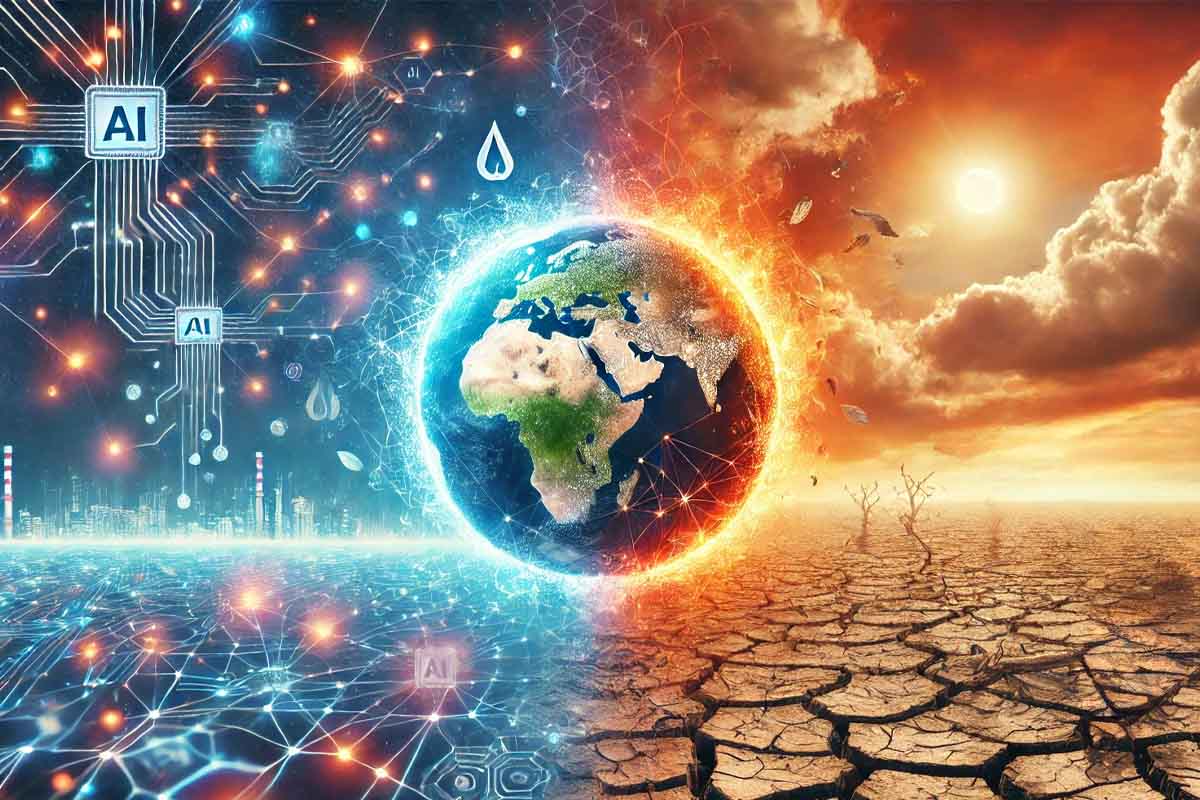AI is transforming our world, but at what cost? How data centers and innovative technologies can influence our future and what sustainable solutions can be adopted to reduce environmental impact

Have you ever wondered what powers the instant search results on Google or the personalized recommendations on Facebook? Artificial intelligence (AI) is now omnipresent in our lives, but how much do we really know about it? What are the hidden costs of this technology that promises to revolutionize our world? Is AI truly improving our lives?
The rise of AI
AI began to proliferate massively with the launch of ChatGPT by OpenAI at the end of 2022. Since then, the technology has permeated every aspect of our online experience, becoming an essential component of digital interactions. Generative AI tools based on large language models (LLMs) like GPT-3 are revolutionizing how we use the internet, but at what cost?
Energy consumption of AI
The proliferation of AI has significantly impacted energy consumption. A study by Alex de Vries published in Joule estimates that training AI models like GPT-3 consumes as much energy as that used by 120 American households in a year. This figure highlights the immense energy demand required to support AI technologies.
According to a 2023 report by Schneider Electric, AI workloads could account for 15-20% of the total electricity consumption of data centers by 2028, up from the current 8%. This increase is driven by the need to process growing amounts of data and train increasingly complex models.
While the energy consumption of data centers currently represents a small percentage of overall energy use, sectors like oil refineries, buildings, and transportation still have a more significant impact. However, the energy footprint of the AI sector could continue to grow as generative AI tools become more widely adopted.
Water consumption in data centers
The vast energy requirements for training and deploying AI technology are now widely recognized. As early as 2022, experts predicted an increase in energy demand from data centers. Google, which once considered itself carbon neutral, and Microsoft, which may abandon its sustainability goals to create more powerful tools, are prime examples.
Junchen Jiang, a researcher at the University of Chicago, emphasized that the carbon footprint and energy consumption increase alongside computational power. The larger an AI model, the more computational power it requires, and new models are becoming increasingly large.
In addition to energy consumption, data centers managing AI models use enormous amounts of water. Shaolei Ren, a researcher at UC Riverside, explains that the water used by data centers evaporates into the atmosphere and can take up to a year to return to the Earth’s surface. This process differs significantly from domestic water use, where consumption is immediate and quickly returns to the water cycle.
Improving Efficiency
Despite predictions of increased energy consumption, significant efforts are being made to improve the efficiency of AI models. A report by Harvard Magazine discusses how new models can be designed to be more efficient using techniques like the “mixture of experts,” which reduces the number of parameters activated for each input, thereby improving overall efficiency.
Another example of efficiency improvement comes from Google and Boston Consulting Group, who note that software and algorithmic optimization can enhance the energy efficiency of AI models, reducing the computational resources required.
Future challenges and innovations
An analysis by Physics Today highlights that despite improvements, the rapid growth of AI could outpace the benefits achieved. Research continues to explore methods to reduce the energy impact through model optimization and the use of more efficient technologies. For instance, Google has developed an AI model called GLaM, which, despite being seven times larger than GPT-3, requires only a third of the energy to train.
As artificial intelligence continues to grow and integrate into our daily lives, it is crucial to balance technological innovation with environmental sustainability. Research and development of more efficient and sustainable models will be essential to minimize the environmental impact of the exponential growth of AI.
In addition to improving model efficiency, it is important to adopt sustainable policies and practices globally. For example, the adoption of renewable energy sources to power data centers and the promotion of energy-saving techniques can help reduce the environmental impact of AI.
International collaboration and the sharing of best practices will be crucial to addressing the environmental challenges associated with artificial intelligence. Only through a collective and coordinated effort can we ensure a sustainable future for our technology and our planet.
Sources: Nature – Harvard Magazine – Physics Today
